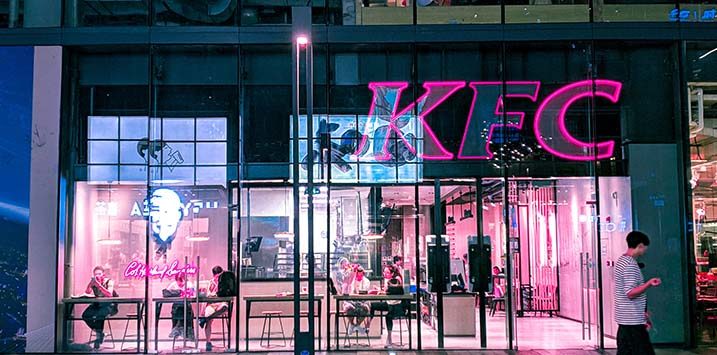
How KFC is making CKF a bear market winner
Fast food businesses usually do well when times are tough, as many people – and families in particular – opt for less expensive places to eat out. It’s therefore no surprise that Collins Foods (ASX:CKF) – which operates KFC and Taco Bell in Australia and KFC in Europe – has outperformed the market. For the month ending 27 June, the Small Ordinaries Index fell eight per cent while CKF declined half that amount.
This week the company announced its full year 2022 results and provided an encouraging trading update. Sales of $1.185 billion grew 11 per cent on prior year, which was two per cent above consensus analysts estimates. Breaking the results down geographically, KFC Australia reported six per cent sales growth, while sales in KFC Europe grew 41 per cent. Taco Bell didn’t do as well, with sales up 28 per cent year-on-year but a few per cent below estimates of $35.8 million. Taco Bell made an EBITDA (earnings before interest, taxes, depreciation, and amortization) loss $3.0 million.
On a Same Stores Sales (SSS) basis, growth was 1.4 per cent in KFC Australia and 16.8 per cent in KFC Europe. SSS growth accelerated in the second half with KFC Australia reporting SSS growth of 2.5 per cent. But Taco Bell dragged with a SSS decline of -8.1 per cent.
EBITDA of $150 million was 10 per cent up on last year and two per cent above consensus. Meanwhile net profit after tax (NPAT) of $65 million was four per cent above consensus estimates and 14 per cent higher than the previous year. Post-AASB 16 accounting for leases, EBITDA was $209.2 million, up 12 per cent on the year, above consensus of $200 million.
Margins were better than expected in both KFC Australia and Europe on a post- lease accounting basis. Group EBITDA margins of 17.7 per cent were an improvement on the 17.5 per cent last year, but they deteriorated in the second half of the year with second half ‘22 margins of 17.6 per cent, down from 17.8 per cent in the first half. (More on the margin headwinds in a moment).
KFC Europe’s result stood out, revealing a strong recovery in both same store sales (SSS) growth and margins.
KFC Australia also performed well. CKF expects cost pressures to intensify in FY23, especially in the first half, as food and labour cost inflation impacts its business.
The company also reported strong trading for the start of the new coming 2023 financial year. Current trading is robust. SSS growth for KFC Australia in the first 7 weeks was 4.1 per cent, 12.2 per cent in KFC Netherlands and almost 20 per cent in KFC Germany.
Of course, the company isn’t immune to the inflation impact of supply chain bottle necks and CKF said margin compression is “unavoidable.” CKF expects weaker margins in the first half of the new financial year, citing higher labour costs and “unprecedented challenges with inflationary pressures and supply chain shortages.”
In particular, KFC Europe is experiencing “significant margin headwinds” of between one and two per cent.
Importantly consensus analysts are already factoring in these changes with consensus EBITDA margins down 100 basis points.
Like all good management teams, CKF will seek to mitigate margin pressures through price rises and operating efficiencies or cost cutting.
Investing in retail is also assisted by store openings, and CKF’s story is not over. The company expects to open 9-12 new KFC Australia restaurants in FY23, 2-5 KFCs in Europe and 9-12 Taco Bells stores.
Overall, the result was impressive with a good start to FY23 probably a function of belt-tightening by consumers. Sell-side analysis however will be encouraged by the store roll out, but they’ll demand more clarity on costs and the degree of margin pressure.
From a market valuation perspective, CKF shares trade on a one year forward P/E of 17.5 times and this compares marginally favourably to the five-year average P/E of 19 times.